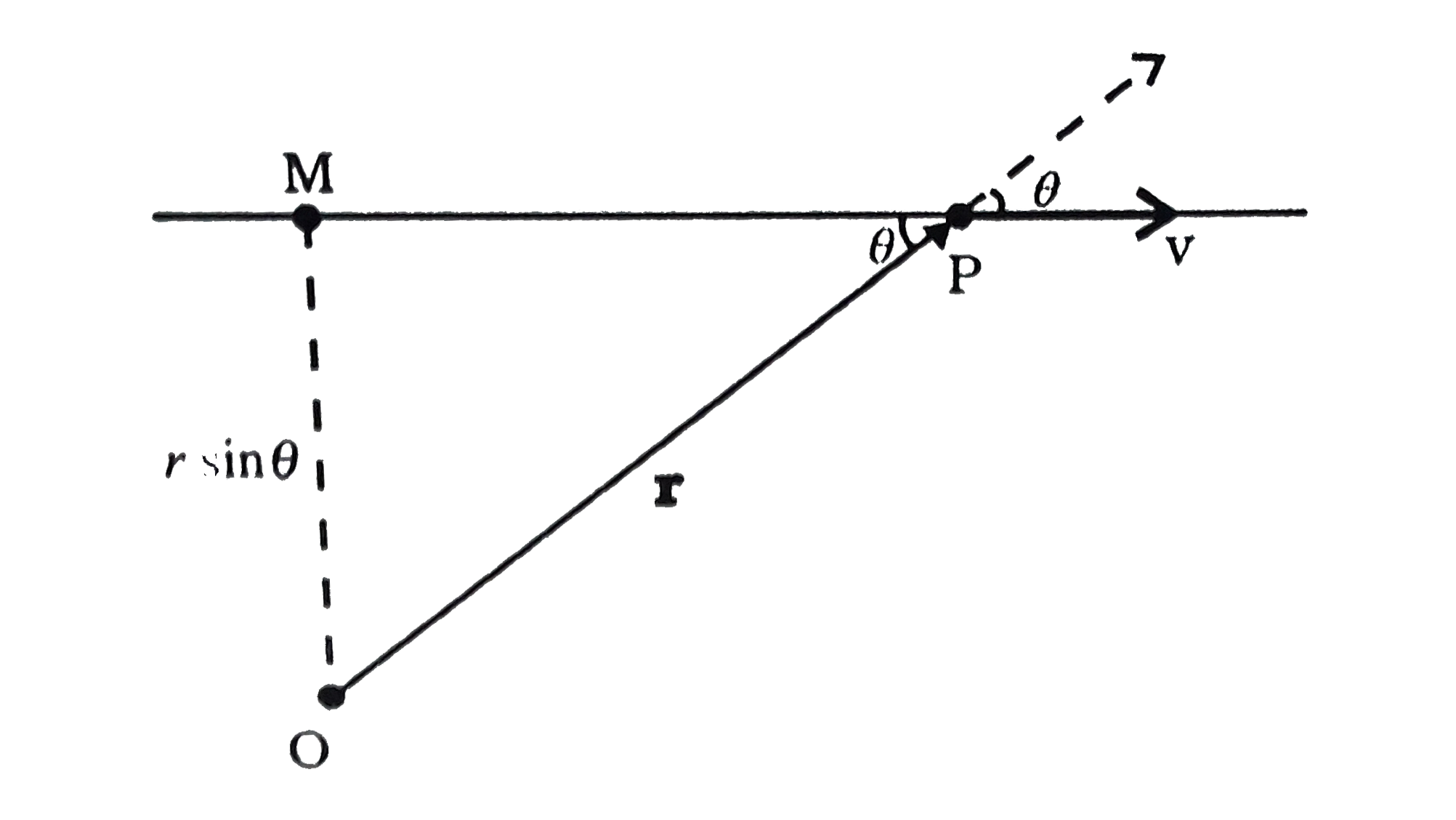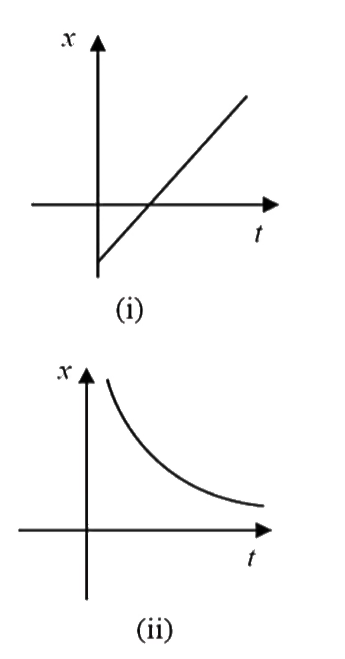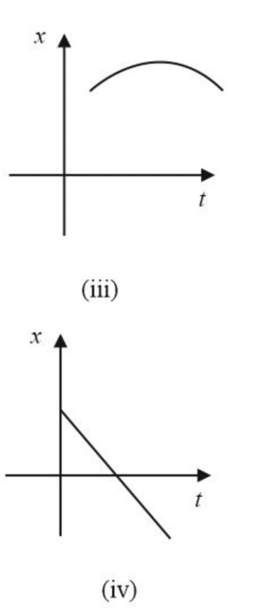Show that the angular momentum about any point of a single particle moving with constant velocity remains constant throughout the motion.
Video Solution
Text Solution
Let the particle with velocity v be at point P at some instant t. We want to caluclate tha angular momentum of the particle about an arbitary point O.

The angular momentum is 1=r×mv. Its magnitude is mvr sinθ, where θ is the angle between r and v as shown in Fig. 7.19. Although the particle changes position with time, the line of direction of v remains the same and hence OM= r sin θ is a constant.
Further, the direction of 1 is perpendicular to the plane of r and v. It is into the page of the figure. this direction does not change with time.
Thus, 1 remains the same in magnitude and direction and is therefore conserved. Is there any external torque on the particle ?
|
Topper's Solved these Questions
- SYSTEMS OF PARTICLES AND ROTATIONAL MOTIONBook:NCERTChapter:SYSTEMS OF PARTICLES AND ROTATIONAL MOTIONExercise:EXERCISE
Explore 33 Videos
- PHYSICAL WORLD Book:NCERTChapter:PHYSICAL WORLD Exercise:EXERCISE
Explore 16 Videos
- THERMAL PROPERTIES OF MATTERBook:NCERTChapter:THERMAL PROPERTIES OF MATTERExercise:EXERCISE
Explore 22 Videos
Similar Questions
Knowledge Check
A particle moves with constant angular velocity in a circle. During the motion its
AEnergy is conservedBMomentum is conservedCEnergy and momentum both are conservedDNone of the above is conservedThe angular momentum of a moving body remains constant if
Anet external force is appliedBnet external torque is appliedCnet pressure is appliedDnet external torque is not applied .Assertion: If linear momentum of a particle is constant, then its angular momentum about any point will also remain constant.
Reason: Linear momentum remains constant if Fnet=0 and angular momentum remains constant if τnet=0AIf both Assertion and Reason are true and the Reason is correct explanation of the Assertion.BIf both Assertion and Reason are true but Reason is not the correct explanation of Assertion.CIf assertion is true, but the reaction is false.DIf assertion is false but the reason is true.
Which of the following graphs represents the motion of a particle moving with constant velocity?


View SolutionShow that the angular momentum of a particle is equal to twice the product of mass and areal velocity.
View SolutionShow that the angular momentum of a particle is equal to twice the product of mass and areal velocity.
View SolutionAngular momentum of the particle rotating with a central force is constant due to
View SolutionAngular momentum of the particle rotating with a central force is constant due to
View Solution